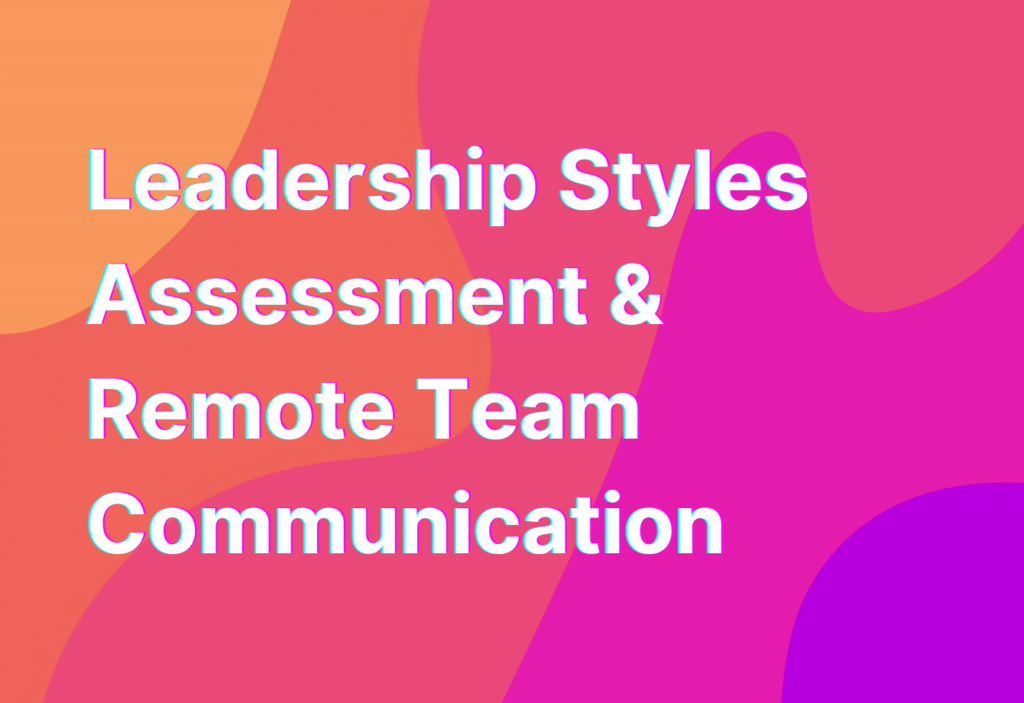Leadership Styles Assessment & Remote Team Communication
Effective leadership is crucial for the success of any team, whether they work in a traditional office setting or remotely. In fact, remote teams often require even stronger leadership skills due to the unique challenges of working from different locations. One way to enhance leadership in a remote team is through a leadership styles assessment. By understanding your leadership style and how it impacts your team’s communication, you can make adjustments to improve collaboration and productivity.
What is a Leadership Styles Assessment?
A leadership styles assessment is a tool that helps individuals identify their preferred leadership style. There are several different leadership styles, each with its own strengths and weaknesses. Some common leadership styles include:
- Autocratic: This style involves making decisions without input from the team.
- Democratic: This style involves involving the team in decision-making processes.
- Laissez-faire: This style involves giving the team freedom to make decisions without much guidance or direction.
- Transformational: This style involves inspiring and motivating the team to achieve their best.
- Servant: This style involves prioritizing the needs of the team and supporting their growth and development.
Understanding your leadership style can help you identify areas for improvement and adapt your approach to better meet the needs of your remote team.
The Impact of Leadership Styles on Remote Team Communication
Effective communication is essential for remote teams to collaborate successfully. Different leadership styles can have varying impacts on remote team communication. Let’s explore how each leadership style can influence communication within a remote team:
- Autocratic: In an autocratic leadership style, communication tends to be one-way, with the leader making decisions and providing instructions. This can lead to a lack of collaboration and limited opportunities for team members to share their ideas and perspectives.
- Democratic: A democratic leadership style encourages open communication and collaboration. Team members have the opportunity to contribute their ideas and opinions, fostering a sense of ownership and engagement. This style can lead to more effective problem-solving and decision-making within the team.
- Laissez-faire: With a laissez-faire leadership style, communication may be less structured and more informal. While this can promote creativity and autonomy, it can also result in a lack of direction and clarity. Remote teams may struggle with coordination and alignment without clear communication channels.
- Transformational: Transformational leaders inspire and motivate their teams through effective communication. They encourage open dialogue, provide feedback, and foster a positive team culture. This leadership style can enhance remote team communication by promoting trust, collaboration, and innovation.
- Servant: Servant leaders prioritize the needs of their team members and support their growth and development. They actively listen, provide guidance, and facilitate communication within the team. This leadership style can create a supportive and inclusive remote team environment.
By understanding the impact of different leadership styles on remote team communication, you can assess your own style and make adjustments to improve collaboration and productivity.
Wrapping Up
Effective leadership is essential for remote teams to thrive. By conducting a leadership styles assessment and understanding the impact of different styles on remote team communication, you can enhance your leadership skills and create a more collaborative and productive remote team environment. Remember, leadership is not a one-size-fits-all approach, and adapting your style to meet the needs of your team is key to success.
If you’re interested in learning more about remote team communication strategies, check out our article on Multitasking skills. It provides valuable insights and tips for improving communication and productivity in remote teams.


